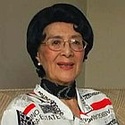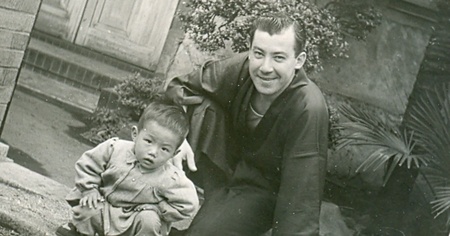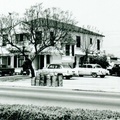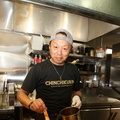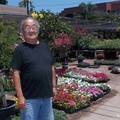Part 2 >>
Amano’s Marriage
Speaking of marriages, there is an episode about Amano’s marriage to Miyoko that allows us to take a glimpse into his character. Hamako and Harry left Japan in 1950, and this story takes place four years later.
A year after Hamako’s departure, Amano left Japan once again in 1951 and headed for Peru. Since he was blacklisted by the US, he couldn’t obtain a passport, so he tried to get to Panama by way of Canada—but officers were already waiting there. However, out of sheer luck, the arresting officer happened to be someone who Amano had taken care of in the past. “Oh, if it isn’t Señor Amano!” the officer greeted him kindly, and proceeded to cover up the passport issue for Amano. With that, Amano was able to go to Peru.
In Peru, working again on his own business, he simultaneously began studying the ancient Andean Civilization. However, with excavations and other work to be done, he had trouble making progress. So then, introduced by one of the elder Niseis, he hired Miyoko Watanabe, a Peruvian Nisei, as an assistant. Miyoko’s work as an assistant was impeccable. From the translation of academic documents, organization of reference materials, to the visiting of museums, his plans began to progress smoothly. Three years after Miyoko became his assistant, with the blessings of many in the Nikkei community, they became married in 1954.
The story scales back a few years from their marriage. Hamako received a letter from her father—“I’ve met someone,” the letter read, and after introducing Miyoko he had asked, “I’m thinking about marrying this person, but what do you think? Yes, or No?” He went on to write, “If you say no, then I won’t marry her.” There was a strong public image of Amano as a man who always made his own decisions and stuck with it; but this reveals a different side of him, showing that this image wasn’t always the same when it came to his family.
Going even further into the past, when Hamako briefly lived in Panama, he had said, “You’re going to be living here from now on,” and took her to many scenic and historical sites. But in terms of their everyday life, he would say, “If you say no, I won’t. If you say yes, I will,” and always gave priority to his children’s opinions.
The way Amano interacted with his family is something that definitely left its imprint within Hamako. There was a time she needed to decide whether or not to teach Japanese to her daughter, Nakako. Nakako (only 4 years old at the time) said, “I don’t want you to teach me Japanese.” Immediately, she thought of how her father had handled such situations with her in Panama. So Hamako purposefully decided not to go against her daughter’s wishes. She did not teach her Japanese, and instead decided to speak English only in the household.
Family Ties
Here is another thing I took away from listening to Hamako’s stories—she has such a wonderful relationship with all of her family members. Amano had married three times and had children with each of his three wives: Hamako and Ryoko from his first, Naoto and Marie from his second, and Mario from his third marriage. That means two stepmothers, one half-sister, and two half-brothers for Hamako. I had imagined that having five non-traditional family members would make their relationships rather complicated, but I can sense that she had no issues with such complexities from the way that she spoke freely about all of them.
There was one term that Hamako hesitated to mention during the interview, and this caught my attention. She used the term “illegitimate child” to describe the onset of her upbringing. When she mentioned this, at first I thought of how this term must have tormented her at some point during her life. However, after listening to her stories, I began to realize that my instincts had been wrong. The hesitation in her tone was actually out of consideration for me. Perhaps Amano himself had felt sorry for putting Hamako in such a situation, but when it came to his family, Amano was a man of no regrets; once he made a decision about something, he never looked back. He never coddled his children, but instead interacted with each of them as an individual person. At the same time, he continued his march toward his grand goal of researching the ancient Peruvian civilizations. Similarly for Hamako, rather than worrying about her early upbringing, paving her own path in life was most important to her above all else.
About Her Two Stepmothers
Hamako has visited Peru seven or eight times along with her husband, Harry, and daughter, Nakako. Amano had invited her over to visit. The first time she went was early in the 1960s. At that time, Amano had already married Miyoko, the Peruvian Nikkei Nisei. When she visited, Miyoko was very good to her. Although Miyoko was technically her stepmother, she was even younger than Hamako’s younger sister, Ryoko. “Could there be anyone as wonderful as her?”—this was Hamako’s first impression of Miyoko. “Her Japanese was elegant; she spoke beautifully. She was nice and very attentive.” Hamako’s lips formed a smile as she spoke about her stepmother.
One time when Hamako visited Peru along with her husband, Harry, Amano and Miyoko also came along to stay at Trujillo with them. There, Amano ran into an old acquaintance and shook his hand. The man appeared awe-struck as tears began to stream from his eyes—almost as if he had just met God. According to Miyoko, there were often others who would visit the museum and shed tears of joy after speaking with Amano. This gives us something to consider as to the type of relationships Amano had kindled with each and every person he connected with.
It is true that he wanted to “Keep all of my things in one place” in regards to his research materials, and that became the motivation to open his museum. His lifelong dream was to be immersed in his studies. Yet, in his will he declared all of these materials to be donated to the Peruvian government upon his death, so his children have inherited next to nothing from their father. Apparently he had left a little something for Miyoko, but she would also use what was left for the benefit of others. The money left after considering inflation is nearly nonexistent.
Amano and Miyoko’s son, Mario, takes after his parents with his philanthropy. Mario currently works as the chair of the Amano Museum. Hamako describes her half-brother as “Truly a wonderful person—almost too good to be living in this world. He is so kind to others; he spends all of his money for the benefit of others.” Given his nature, his household is by no means affluent.
When it became difficult for the Amano Museum to keep up with the times, and also knowing about Mario’s financial situation, at one point Hamako researched whether Amano was eligible for reparations as part of the Civil Liberties Act of 1988. If Amano was eligible for reparations according to the law and could be compensated, couldn't Miyoko accept it on his behalf? If so, then wouldn’t she be able to donate part of that for the operation of the museum? This is what Hamako had hoped for, but alas, one criteria of the law was for the internee to be alive at the time the law was passed. Amano had already passed away in 1982, so he was ineligible for reparations.
Amano’s second wife, Shizuko, was 10 years older than Hamako. “I couldn’t really call her ‘Mom’, so I called her “Shizkuo-neesan (big sister),” she recalls. Back when Hamako had first met Harry, she described Shizuko to him as “The one person I would have wanted you to meet… but she’s no longer with us.” Shizuko had returned to Japan from Panama before the war, ahead of Amano. She passed away in 1943, the year after Amano returned to Japan on the repatriation ship. Although her time with Shizuko was short lived, from these words we can sense a deep respect that Hamako had for her.
As a side note, her younger sister Ryoko had married a Mr. Sakane from Kyoto, and was blessed with two sons named Hiroshi and Atsushi. Ryoko visited Hamako’s home in Encinitas back in 1995. Hiroshi currently works as the executive director of Amano Museum. “When Hiroshi was still very young, my sister brought him to the house in Fujisawa. My husband just happened to be there that day, and after taking one look at my husband, Hiroshi started to cry out loud. I couldn’t believe that such loud noise can be made by such a tiny body!” Hamako vividly recalled the first time Hiroshi had seen the foreigner—a sight that is hard to imagine knowing the Hiroshi of today.
Ryoko passed away on October 27th, 2010.
© 2012 Yukikazu Nagashima


